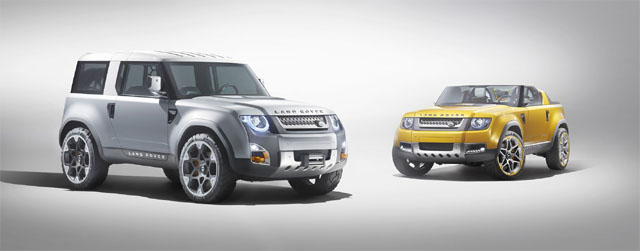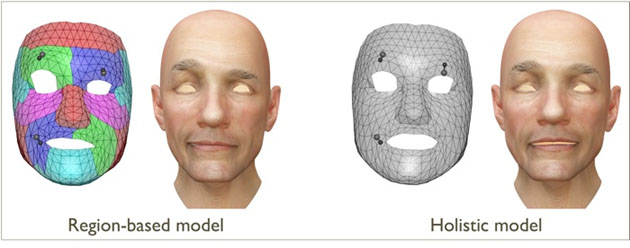Land Rover Unveils New Defender Concepts
For more than six decades, Land Rover has been designing and building 4x4s. Its Defender is an original reconfigurable vehicle. Now, DC100 aims to demonstrate the future of Land Rover capability and versatility while DC100 Sport is being positioned as an active expression of freedom and leisure.
According to the company, the new off-road tools will extend the capabilities of the Land Rover Terrain Response programme to allow it to automatically optimise the concepts for any environment without driver pre-selection.
Terrain Response on the DC100 concepts also features High-Definition cameras mounted on the front to analyse the visual spectrum of the ground ahead. This is then compared to images stored within a predictive neural network and allows the system to visually determine, for example, the difference between sand, grass, mud, gravel, snow and asphalt.
Acting as an early-warning system is the Terrain-i mapper that creates a virtual 3D visualisation of the ground ahead and displays it on the central touchscreen. Similar to systems used by fighter pilots, Terrain-i uses a headlamp-mounted scanner that runs complex algorithms to assess the route ahead and warn the driver of obstacles potentially too large to be safely negotiated.
Land Rover has developed a sonar-based system for assessing water depth that allows the driver to make informed decisions as to whether to proceed into flooded areas.
The system utilises sensors mounted in the bumpers and wing mirrors. These are able to measure depth and by working in conjunction with inclinometers recognise whether the level is increasing or decreasing. All this information is displayed in an intuitive graphic on the central touchscreen.
Further allowing the concepts to adjust to changing conditions is a driver-deployable spiked tyre system. This is operated by an electro-mechanical system mounted within the tyre on the inside of the wheel; activation of the technology causes air to inflate a secondary air chamber, filling pods moulded into the tread of the tyre which contain the spikes.
Land Rover has adopted Radio Frequency Identification (RFID) technology to increase the accessibility, usability and security of the concepts.
These allow the main key fob to be left in a slot in the glovebox, which deactivates it and transfers its lock and unlock functions to the rugged RFID chip. Once the system is armed and the car secured, only that specific RFID smart tag will allow it to be unlocked and reactivate the key fob.
Future developments of the system will allow each family member to have their own smart tag, which would save their personal audio, climate, communication, safety and seating settings. Third-generation smart tags could also include biometric data that would use facial systems to increase security.
“Loved the world over for its simple, honest and distinctive design, we are determined that the new Defender will be true to its heritage while meeting the requirements of a changing global market,” said John Edwards, global brand director, Land Rover
Land Rover has unveiled the future technologies with these two new Defender concepts at the Frankfurt Motor Show. The announcement was made today, Sept. 14.





